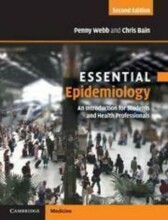Summary: Tox20303
- This + 400k other summaries
- A unique study and practice tool
- Never study anything twice again
- Get the grades you hope for
- 100% sure, 100% understanding
Read the summary and the most important questions on TOX20303
-
College 1 + 2
This is a preview. There are 64 more flashcards available for chapter 05/09/2017
Show more cards here -
Rachel Carson 'Silent Spring' (boek) 1962
Alles was dood gegaan en het gebruik van DDT was uit de hand gelopen. Silent spring niet veel vogels en insecten...
challenged the notion that man was destined to control nature -
Exposure assessment: route & site of exposure
- Gastrointestinal tract (oral)
- lungs (inhalation)
- skin (dermal)
- injections
- Gastrointestinal tract (oral)
-
Exposure assessment: duration and frequency
Acute: <24 hours, single dose
subacute: 1 month or less
subchronic: 1-3 months
chronic: >3
effect varies with dose & exposure regimen -
Calculate if actual exposure is safe: (margin of safety)
Margin of safety
exception: initiating genotoxic carcinogens: only risk assessment (no safety, priority setting) -
Oxidative stress: catalyses Haber-weiss reaction
Increases the impact of superoxide anions O2 *- and H2O2 by the formation of reactive hydroxyl radicals *OH
'makes it more toxic' -
College 3 + 4
This is a preview. There are 30 more flashcards available for chapter 06/09/2017
Show more cards here -
Absorption: passing cell membranes via
- Phospholipid
- intergral proteins
- cholesterol
- ion channel
- ligand
- Phospholipid
-
Passive transport is influenced by:
- Water solubility:
Hydrophobic chemicals --> passive diffusion
Hydrophilic chemicals --> passive filtration (aqua pores)
- Ionization:
Low pH (< pka) --> chemical in non-ionized form --> chemical is taken up in stomach
High pH (> pka) --> chemical in ionized form --> chemical is taken up in small intestine
- Blood flow: if molecules are not taken away by bloodflow
Concentration of the chemical = concentration blood -
Uneven distribution of a chemical
Toxicity in a specific tissue: water soluble chemical + albumin --> stay in fat tissue -
Blood brain barrier
Active transport needed for the uptake of molecules in the brain:
- Thight junctions
- No fenestrea
- Low protein content
- ATP is needed -
College 5 + 6
This is a preview. There are 15 more flashcards available for chapter 07/09/2017
Show more cards here -
Not water soluble chemicals
Need biotransformation in order to be excreted via urine/bile
- Higher grades + faster learning
- Never study anything twice
- 100% sure, 100% understanding
































